Features
How Kumudini made a change at a Quarantine Center
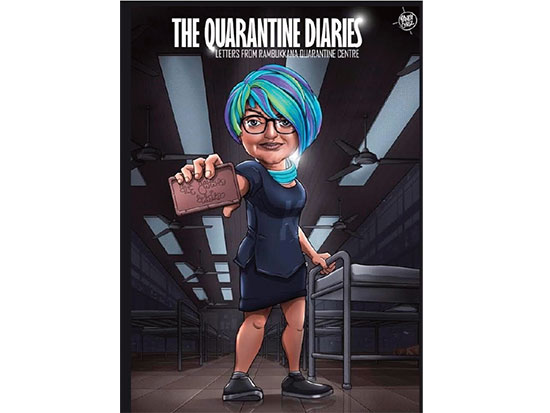
My colleague and friend Kumudini David recently had a PCR test done and tested positive for COVID-19. She was given the choice of staying in a hotel or a resort but could not afford that as the cost is about LKR 250,000 for the period of supervised quarantine. She opted for the local quarantine center alternative, monitored and controlled by the Sri Lankan Government and supervised by the SL Army, provided free of charge to all citizens in mandatory quarantine.
Kumu has kept a detailed journal of her experience at this facility, from the bus trip to the allocated regionally located quarantine centre, through the days that followed, updating her friends and followers on Facebook.
The updates were fascinating to read, and I am not the only one who included the reading of these bulletins as part of my daily routine. What interested me particularly was the radical change in Kumudini’s approach as she confronted the challenges she faced, both personally and in the context of the women she was quarantined with, at Rambukkana Quarantine Centre.
The quarantine was in a large building belonging to the Brandix Company, with the facility run by the Sri Lankan Army and the Kegalle Hospital. It had been offered for the purpose of providing quarantine space for those needing it.
Kumu’s initial photographs showed metal beds and an understandably unadorned premises. This was a basic facility as it was free of cost to those quarantining. They had been given half an hour to get the essentials they needed for a 10-14 day stay away from home and many were not prepared.
Those in quarantine were divided by gender and initially also by ethnic community. The women in Kumu’s centre had to contend with toilets in a bad state; and those who were menstruating, pregnant or had just given birth were concerned about sanitation and hygiene needs. Sanitary napkins and towels and nappies for infants were urgently needed. Hygienic disposal of these was also necessary. These were not initially foremost in the minds of most of the male personnel in charge.
Many were traumatized: not only by worries for themselves and how they would individually respond to the onset of the illness, but by being separated from their children and families for an extended period of time. They were worried about not being able to be in contact with husbands, kids and elderly parents they were caring for. Their phones needed to be reloaded to ensure contact was sustained.
That first day, as we can see in her report, Kumu was stressed, and anxious, and also angry. But it only took a few hours before she realized that she was not powerless and did not have to be resigned and passive in this situation.
She did not waste time on self pity, extended bouts of anxiety or in complaining to the authorities about the shortcomings. Kumu’s a practical and optimistic person, and in the years I have known her I have seen how she faces oncoming challenges with energy and intelligence. She has both high IQ and EQ, and this dynamic fusion of leadership qualities was strongly illustrated by what she did next.
She heard the complaints and worries of the women around her and she started on Day 2 to set in place certain unofficial processes by which these concerns were heard and addressed. She asked them all to list what they individually needed and worked out how much this would cost.
She then turned to her extensive network of friends and colleagues on Facebook and presented us with the situation and asked us to raise funds by donating whatever we could, not only in terms of finances transferred electronically or via direct deposit, but in the form of actual goods. These included Astra margarine, staples like milk powder, rice and lentils and also tinned and dry food packets, cleaning liquids and soap powder to wash clothes. The children were to be given drawing books and crayons.
Kumu’s circle met her request generously and promptly. She was able to raise almost a million rupees in a few days – an extraordinary result. This was in excess of what was required at Rambukkana so some of the funds will be allocated to store goods for future inmates and also for other quarantine facilities needing such community-funded support
It is her hope that others will be inspired and encouraged to do the same in the weeks and months ahead as the community increasingly gets tested and the extent of the virus’s transmission is traced. Many people have been reluctant to be tested as they were anxious about being quarantined.
That first day, the women gave Kumu a nickname in Sinhala which she immediately embraced and wears with pride. Despite experiencing some of the symptoms of the coronavirus, including fatigue, mild fever and headaches, she lifted and moved the metal beds in the facility into better arrangements according to needs. They named her their ‘Sister who moves beds’.
Kumudini is a fellow graduate of SEALA (South East Asia Leadership Academy), and during our programme in 2018 her nickname was ‘The Warrior’. She is a born leader. She laughs and says she is bossy and outspoken. But she embodied great leadership in this situation. What we all learned in concept and theory at the Academy was put into direct practice here by her, and we all see how effective it is.
Kumu acted in the Rambukkana Quarantine Centre as an unofficial hall monitor, making sure that when the goods came in boxes packed by her friends, in vehicles they drove from Colombo, that the ladies lined up and received what they needed equitably – no pushing, shoving, arguing or meanness.
Kumu’s story is an inspiring example of how one person’s positive approach to the biggest crisis of our time can benefit hundreds of others with whom she is in contact. Previously unknown to each other, and with many differences in social class, level of education and personal upbringing, they formed a community under her leadership and as a result of her initiative.
We hope that this story will go viral and prompt others to realize that with co-operation and determination and a good attitude, through our collaborative efforts we can turn even this challenge which confronts us into an opportunity for growth, learning and even blessing.
The crucial point is that it is the attitude of positive determination and empathy that enabled Kumudini to do this. She did not judge anyone or trivialize anyone’s situation. She didn’t feel paralyzed or helpless for long. She took action, with understanding of the real needs (both spoken and unspoken) of those she was acting for. She acted to represent them to act positively in a situation where they initially must have felt helpless and despairing. And she represented all of them.
Kumu says: ‘The segregation didn’t last. We are all working together now. I will continue to work on helping this Quarantine Centre and others.’
Note: This image of Kumudini David was created by the artist Randy Chriz Perera.
– Devika Brendon
Features
Africa gaining ground in intra-regional cooperation
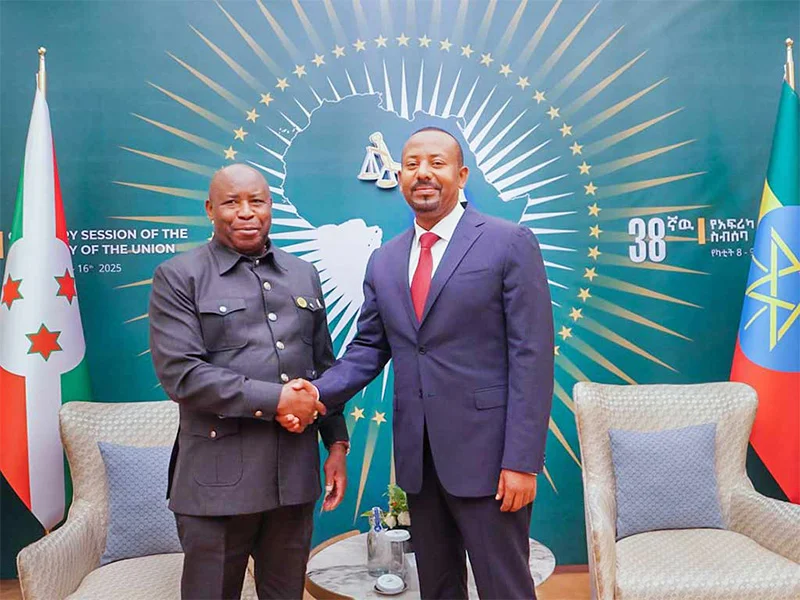
 At a time when the US is veering towards a policy of international isolation, it augurs well for international growth that Africa is emanating signs of stepping up intra-continental cooperation. Above all, Africa is in the process of proving that she could ‘stand-alone’ and be relatively autonomous in her ground-breaking growth drive.
At a time when the US is veering towards a policy of international isolation, it augurs well for international growth that Africa is emanating signs of stepping up intra-continental cooperation. Above all, Africa is in the process of proving that she could ‘stand-alone’ and be relatively autonomous in her ground-breaking growth drive.
Of course such epochal developments should not be construed as meaning that Africa would sooner rather than later be rid of the socio-political and economic bottlenecks that have been dogging her at heel for decades. What they mean is that she is managing these problems in a consistently constructive fashion currently.
We in South Asia in particular need to take note of these developments. This is mainly in view of the fact that SAARC is non-functional. It is not ‘dead’, as a former President of Sri Lanka tried to have us believe, but its virtual paralytic state at present should have discerning sections in the region concerned. It is robust regional cooperation in the fields that matter that helps a country in its growth and development and if SAARC is dysfunctional this is a serious setback for Sri Lanka and the region.
Closer integration into BIMSTEC and ASEAN is certainly desirable but if governments are having Sri Lanka’s best interests at heart it is primarily to the SAARC region that they need to look. For instance, how Sri Lanka is hoping to further its growth prospects by not factoring in stepped-up and positive economic interaction with India and Pakistan, for example, is incomprehensible.
There is a strong regional dimension to any country’s economic growth and unless the relevant regional cooperative mechanisms are rendered operational, the desired level of national development could not be achieved in full. Hence the need to render SAARC fully operational once again.
However, unless and until governments of the region realize the urgency of meeting the above challenge, SAARC would remain in a state inertia. The pressing need is visionary political leadership at the regional level. Right now this is seriously lacking.
It would seem inappropriate and misleading at first blush to attempt to draw comparisons between the vast continent of Africa and the South Asian region in view of the latter’s comparative geographical smallness, but this is more so why Africa’s present exercises in intra-continental cooperation need to be positivey assessed. If Africa could be making some headway in intra-regional cooperation, given her ‘Giant’ status and her seeming unmanageability as a collectivity, why can’t South Asia, a comparatively physically small region? ‘This is the Question’.
While the above and connected matters of importance for regional growth need to be seriously studied by political leaders and policymakers of South Asia, they would be acting in the regional interest by taking a leaf or two out of Africa’s book of cooperative growth and development.
All watchers of international development should feel compelled to take a hard, discerning look at the 38th African Union (AU) Summit held in Addis Ababa, beginning February 15th this year. Interestingly, the Summit theme was, ‘Justice for Africans and People of African Descent through Reparations.’
Coincidentally, erstwhile Namibian leader Dr. Sam Nujoma passed away on the eve of the Summit. Nujoma was perhaps the last of those prominent leaders from Africa who doggedly championed the cause of the libration of his country and of the continent from the shackles of colonialism. More leaders of his ilk are required by the South in general and Africa in particular.
While the acquiring of ‘reparations’ for colonialism’s ravages could prove a very long-gestation project, it is vitally important for Africa and other regions that came under colonial control to keep the issue constantly in focus.
Meanwhile, Africa’s gains in economic cooperation under the AU need to be studied appreciatively by the South and other regions in their interests. Some of the achievements of the AU under the aegis of the African Development Bank (ADB), as outlined by outgoing president of the Bank, Dr. Akinwumi A. Adesina at the Summit were: ‘515 million African lives were transformed over the past decade, including 231 million women, 127 million people gained access to better services in terms of health, 61 million people gained access to clean water, 33 million people benefited from improved sanitation, 46 million people gained access to ICT services, 25 million people gained access to electricity.’
Reports said that the Summit also, among other things, adopted the ‘African Financing Stability Mechanism’. Under this arrangement, $20 billion in debt refinancing will be provided for African nations. This will happen alongside the adoption of the ‘Strategic Framework on Key Actions to Achieve Inclusive Growth and Sustainable Development in Africa Report’.
The Report outlines key actions for Africa to ‘Achieve and sustain an annual growth rate of at least 7% of GDP over the next 5 decades.’
The above are a few aims that the AU intends to achieve going forward for the whole of Africa. But they are sufficient evidence of the current effectiveness of the collective organization. We see here a notable example in South-South cooperation which is a dire need today in the developing world.
South-South cooperation is the way to go particularly in consideration of the US’ current policy of virtually ridding itself of the past policy of helping the South by way of development assistance. Instead of bemoaning the fact that institutions, such as USAID, will be almost no more, the South would do well to take a hard look at Africa’s success stories in helping itself with little or no external assistance.
The discontinuation of US assistance needs to be seen as the proverbial ‘blessing in disguise’ by the South. Here is an opportunity for the Southern hemisphere to finally rid itself of those neo-colonial umbilical binds that have been preventing it from achieving genuine national liberation.
To be sure, the South is not going to meet with spectacular success by adopting the African model in the near term. But if the model is doggedly persisted with by enlightened governments of the South some success is certain to accure to the hitherto ‘Wretched of the Earth’, going forward.
Features
Mrs. World Tshego Gaelae …doing it differently

While most of our pageant winners get involved in frivolous activities, during their reign, the 40th Mrs. World pageant winner, Tshego Gaelae, from South Africa, is keen to bring into the spotlight her country’s potential.
Before her departure for the Mrs. World pageant, held in Las Vegas, in the USA, in January, the Lawyer, Entrepreneur, Model and Digital Creator, said:
“I’m so excited to be sent not only as a delegate but a representative of those hopeful hearts that always want to see South Africa’s potential shine and win. I stand on the shoulders of icons, world champions, the Queens that have gone ahead of me, and of the world leaders that continue to ensure our global participation and impact.
“Thank you everyone for the support so far!”

A coke and a smile…with Sprite Cucumber her pick
Referring to the interview for the position of Mrs. World, Gaelae said: “We get to bring our most authentic self to advocate for the causes we want to advance through the most prestigious platform that is the Mrs World Pageant. What an honour to have such experienced judges who care to hear about what I want to achieve.”
The lead up to the prestigious Mrs. World event was doubly exciting for Gaelae as she got the opportunity to display not only her country’s creations but also check out certain nostalgic venues.
“We received the honour of being at the Elvis penthouse suite, at the Westgate Vegas! The space is spectacularly filled with iconic and historic presence, fit for the king that was Elvis Presley.”
The Mrs World participants spent an evening honouring Victoria’s Voice Foundation and Gaelae’s gift to the Foundation was a canvas shirt with President Nelson Mandela’s face printed on it. The shirt can either be worn or displayed in a frame, and Gaelae says she is so glad to have had the opportunity to present a piece of her beloved South Africa.”
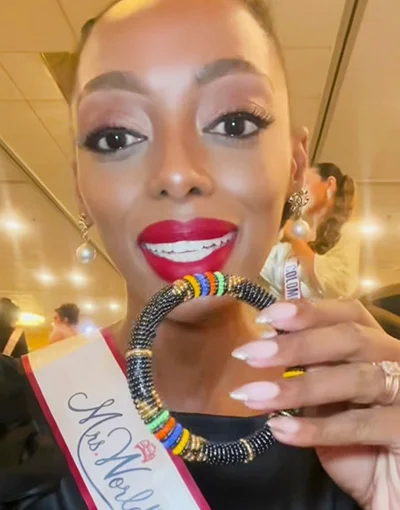
The bangles she gifted to all the participants at the Mrs. World pageant
Gaelae went on to say: “I always joke about being Zulu in my past life, but on a serious note, I love the Zulu Culture so much, that I gifted my Mrs. World Pageant Sisters some beautiful bangles.”
They also visited the special Coca-Cola Store in Vegas, and got to taste some interesting flavours. And Gaelae’s pick … “Sprite Cucumber definitely wins for me.”
Mrs. World enthusiastically said that one of the biggest gifts she received out of her Mrs South Africa journey was that of sisterhood, “and it’s so amazing to come to the Mrs. World pageant and find it once again,” she went on to say.
“My roommate was the gorgeous Ishadi Amanda from Sri Lanka! We bonded with no delay, and laughed till we cried! I was literally paired with a sister from another mother.”
Tshego Gaelae also had a special comment to make regarding the article we published about her in The Island of 6th February, 2025.
“Thank you so much for the beautiful article and coverage.”
Features
Activate all that is good for your skin
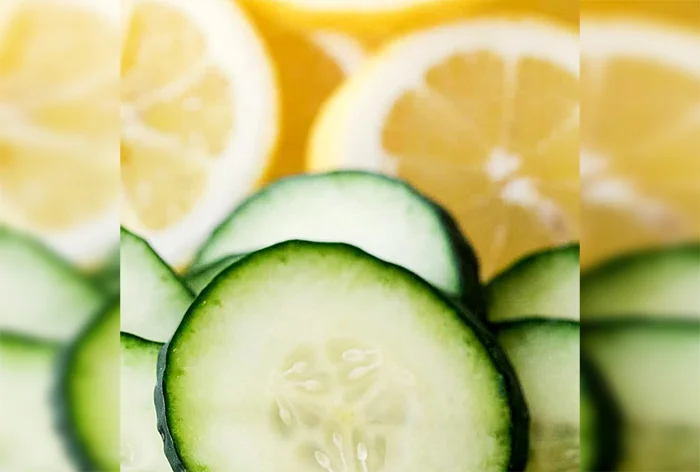
 Hi! This week, too, I’m giving you some easy to prepare tips to help you achieve all that is good for your skin.
Hi! This week, too, I’m giving you some easy to prepare tips to help you achieve all that is good for your skin.
* Cucumber and Lemon:
Mix equal parts cucumber and lemon juice and apply the mixture on your face (avoiding eyes). Allow it to sit for 10 minutes and then rinse it off. This natural face beauty tip will brighten your skin tone and lighten blemishes, if used on a regular basis. The best aspect is that it is appropriate for all skin types!
* Tomatoes:
Scoop up the pulp of one tomato and apply it evenly on your face. Allow it to dry for 15 minutes before washing it off with warm water … to reveal a naturally radiant skin.
* Green Tea:
After steeping green tea in hot water for about 05 minutes, allow the tea to cool. Transfer the tea to a spray bottle and spray, in short bursts, or place a little amount onto a cotton pad and pat on your face after thoroughly cleaning it.
* Chilled Tea Bags:
A chilled black or green tea bag does wonders for your skin. This natural face beauty technique may rapidly reduce puffiness around the eyes, making them appear brighter and more alert. Place the tea bags on your eyelids and relax for 05 to 15 minutes while they perform their magic.
* Honey:
Applying a small amount of honey to your face every day is an excellent approach to getting healthy, bright skin. Honey’s absorbing properties draw out pollutants from skin pores and help completely cleanse your skin. Honey’s antibacterial effects heal and prevent acne. Honey’s antimicrobial qualities soothe skin irritation and protect skin from bacterial infections. Honey, has remarkable moisturising effects and is also a terrific relief for dry skin.
* Coffee:
Exfoliating on a regular basis improves the appearance of your skin, making it look younger and healthier. For those who enjoy coffee, a homemade coffee scrub is all the weekly nourishment your skin requires. Coffee’s anti-inflammatory qualities minimize redness, irritation, and acne. All you need to do is mix freshly ground coffee beans, coconut oil, and brown sugar to your desired consistency in a bowl. Massage gently in circular strokes over your face, then rinse with warm water. After using an exfoliant, always moisturise.
-

 Sports5 days ago
Sports5 days agoRemarkable turnaround for Sri Lanka’s ODI team
-

 Business5 days ago
Business5 days agoUN Global Compact Network Sri Lanka: Empowering Businesses to Lead Sustainability in 2025 & Beyond
-
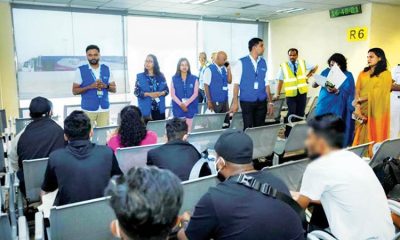
 Features5 days ago
Features5 days agoScammed and Stranded: The Dark Side of Sri Lanka’s Migration Industry
-
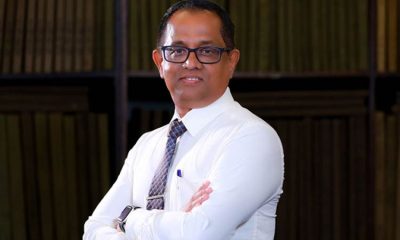
 News6 days ago
News6 days agoSpeaker agrees to probe allegations of ‘unethical funding’ by USAID
-
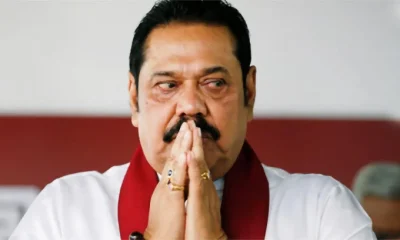
 Features4 days ago
Features4 days agoDon’t betray baiyas who voted you into power for lack of better alternative: a helpful warning to NPP – II
-

 Features4 days ago
Features4 days agoTwo films and comments
-

 Features7 days ago
Features7 days agoClean Sri Lanka and Noise Pollution (Part II)
-

 Editorial6 days ago
Editorial6 days agoCoal giant awakes, but uncertainty prevails











